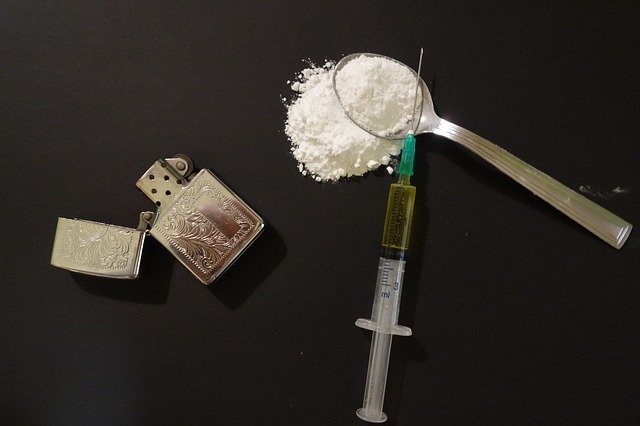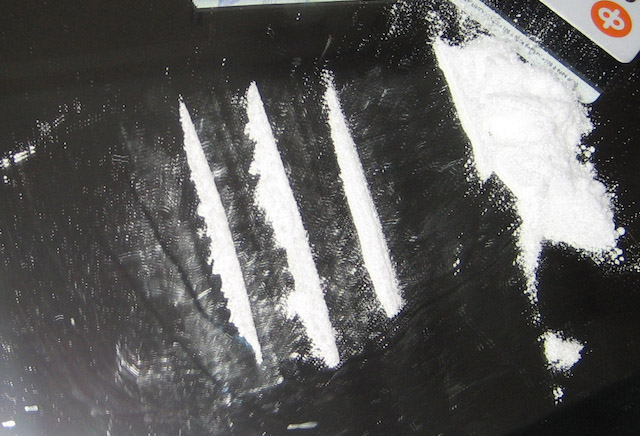Cocaine is the most dangerous drug on the streets today, according to an article from 1988. Although others will assure you that heroin is the most dangerous drug out there. People in the DEA want you to know that fentanyl is the most dangerous drug they have ever seen. They also point out that methamphetamines are a strong contender for number two. Others will assure you it’s nicotine. Tobacco, incidentally, is said to claim more lives than all other drug overdoses, car accidents, and homicides combined. Yet others insist alcohol is the most dangerous drug. With charts to show how much worse alcohol is to the world than any other drug, if you’re interested.
With claims that booze kills as many as 95,000 people per year, your only debate may be whether you consider alcohol a drug or not. And yes, some folks will even tell you marijuana is the most dangerous drug. So which one is it? You can clearly make a case against any of them, but one has to be the worst, right? Let’s dive in and see!
Fentanyl and Carfentanil

Fentanyl has become public enemy number one in the drug world over the last decade. Although it is a prescribed medication for dealing with chronic pain, such as that experienced by cancer patients, and a number of people benefit from the medication, the illicit use of lab-made fentanyl has blown up in the media and become a sort of opioid boogeyman for people who know little about it.
In 2017, the CDC started labeling fentanyl a public health crisis. By 2020, the CDC published data claiming that, out of 92,000 drug overdose deaths, nearly two-thirds were because of opioids, and most of those were fentanyl. Other data says fentanyl is responsible for as much as 70% of all overdose deaths.
In 2022, overdose deaths rose to nearly 108,000. Nearly 74,000 of those were blamed on synthetic opioids, like fentanyl. Conflicting data, again from the CDC, suggested that there were 84,000 overdose deaths from opioids in 2022, but that it decreased to 81,000 in 2023.
One of the big problems with fentanyl has been the scaremongering in the media, much of it fueled by the police. Police overreaction to what they believe is fentanyl exposure has been a chronic problem. Starting in 2016, police across America were given instructions on how to handle fentanyl that included massive amounts of misinformation about how dangerous it was and how easily they could be exposed to it. This led to numerous stories of police thinking they were exposed and suffering overdoses when, in fact, they were only suffering panic attacks.
Just to be clear, you won’t die if you touch fentanyl. You won’t collapse on the street and have a heart attack unless you have a severe allergic reaction.
Because no drug is so deadly that you can’t make it more lethal, fentanyl has been somewhat overtaken by carfentanil as the most horrifying opioid on the market. As the name might suggest, carfentanil is closely related to fentanyl. It’s actually a derivative, but it’s much more potent. You’ve likely heard, rightly or wrongly, how dangerous fentanyl is. Carfentanil is 100 times more potent.
So, what the heck do we even need a drug like carfentanil for? Well, tranquilizing elephants in an emergency is one use. Not just regular tranquilizing, but emergency tranquilizing, when you need to put the elephant to sleep quickly. This stuff was never really meant for humans, but never underestimate the human desire to push their limits.
Keep in mind, opioid abuse is pretty much an American pastime at this point. It’s been going on for over a century. Fentanyl just replaced heroin, which replaced morphine, which replaced opium, which became an issue in the 1870s. Keep this in mind whenever you hear about efforts to combat an “opioid crisis.” It hasn’t worked yet in 150 years.
Nitazenes
Never heard of nitazenes? You should pay attention. They’re poised to be “even worse” than fentanyl. And, just like fentanyl, they’ve existed for decades, but no one cared until recently. They’re another kind of synthetic opioid like fentanyl and as fentanyl becomes the sole focus of law enforcement and government ire, nitazenes are starting to fill the gap.
Nitazenes were created to replace morphine in the 50s, but the problem was they were so strong the FDA wouldn’t approve them because of their high potential for overdose, which is the reason you probably don’t know about them. They’re also about 40 times stronger than fentanyl, and law enforcement started noticing them on the streets around 2019.
Since 2019, about 2,000 people have died from overdosing on Nitazenes. That number is obviously a lot lower than fentanyl, but there’s a fear that it may increase dramatically as law enforcement continues to crack down on the more well-known drug. The chief scientist at NMS Labs called Nitazenes the “most persistent and prevalent new opioid” on the streets back in 2020.
Aside from being potent, which means only a small dose is needed, the drugs are cheaply produced and are often mixed with other drugs, including fake prescriptions, making overdoses more likely.
The ban on fentanyl in China is what thrust Nitazenes back into the spotlight as drug makers, looking to avoid stiff penalties for making fentanyl, researched other opioids, then found their new star. One of the problems with Nitazenes is that multiple formulations can be developed, not just one version. That makes it harder to identify or test for.
The number of overdoses linked to Nitazenes is still extremely low compared to something like fentanyl. However, as the fentanyl crackdown continues, expect these other synthetic opioids to become far more prevalent. And, since there’s so much stronger, it’s very likely there’s going to be a spike in overdoses in the near future.
Heroin and Methadone

You can hardly discuss the problem with opioids without discussing heroin and methadone. Heroin, for many people, seems to be a passe sort of drug. Fentanyl has replaced it in many ways. Still, in 2021, there were 9,173 reported heroin deaths in America. That is far from insignificant.
Heroin had a long history as a medicine before the addictive properties and overdose potential were fully understood. You could get heroin to treat a cough.
Methadone, if you are unaware, is a synthetic opioid that was created to help people get off other drugs like heroin. And while methadone is meant to help save you from your addiction, it is also extremely dangerous. In fact, in one year in Ireland, twice as many people died from methadone overdose as they did from heroin. Between 2007 and 2021, over 55,000 people in America died from methadone overdose, or close to 4,000 per year.
Cocaine and Crack

Back in the 1980s, cocaine and its less glamorous cousin, crack, were the drug boogeymen that the media was touting to intimidate suburbia. The US Congress literally had hearings about “The Crack Cocaine Crisis” in 1986. It had graduated to an “epidemic” in government documents by 1991.
Crack was cheaper, which obviously made it more dangerous, but also less pure. Crack was cut with substances like baking soda or ammonia.
As the saying goes, everything old is new again. During the early 90s, cocaine use was actually down quite a bit. However, over the last 25 years, it has increased significantly in places like England and Wales. There were 11 cocaine-related deaths in England and Wales in 1993, its lowest point during that time. In 2023, that number was up to 1,118.
The same trend, on a larger scale, happened in America. In the year 2000, there were only 3,544 fatal overdoses of cocaine in America. In 2022, that number peaked at 27,569. Half of all overdose deaths in New York City are attributed to crack and cocaine.
The price of cocaine was remarkably high in the 80s, while crack was the cheaper, albeit dirtier, alternative for many. In the mid-’80s, a gram of cocaine cost $600. By 2007, it was down to $135. In 2020, it was about $120 in America. A gram of crack, on the other hand, might be around $65, with a hit costing just $15. The cheapness, combined with the lethality, is what keeps it close to opioids in terms of danger, even after all these years.
Synthetic and Doctored Marijuana

Despite some fringe opinions, most people would agree that marijuana is one of the least dangerous drugs that a person can use. They have legalized it in a number of places, after all. There’s just not an abundance of evidence that it has dangerous side effects. However, there’s a difference between normal, everyday weed and doctored weed. If you’re not getting the real, pure thing, it could be very dangerous.
Some years ago, the press was quite enamored with stories about zombies. These were initially reported to have been the result of people taking bath salts, another kind of synthetic drug. In one case, several dozen people took cannabis doctored with fentanyl and caffeine. They were described as zombies because of how they behaved after.
Synthetic marijuana, sometimes called Spice, was also linked to psychosis. In other cases, contamination with rat poison led to bleeding and deaths among people using the synthetic product.
The actual list of potential side effects from using synthetic marijuana is almost baffling. Some people died from cardiac arrhythmia, liver failure, kidney failure, and seizures. Indirectly, it was also linked to people dying of hypothermia. Some cranial hemorrhaging, comas, nausea and vomiting, bleeding gums, internal bleeding, bloody noses, suicidal ideation, and a host of psychiatric problems that can persist for as much as a month or more after using the synthetic weed. And that’s just a few of the side effects.
In Africa, in 2024, news was spreading about another drug known as Kush. This was another synthetic cannabinoid that was mixed with nitazenes, disinfectants, and, if the stories are to be believed, crushed-up human bones. Those who smoke it are said to experience a sort of detachment from reality, which basically makes them stand still in a hypnotic state and do nothing for hours at a time. Once again, people describe them as zombies. At least this time, they’re consuming actual human remains.
It’s believed that kush has killed thousands of people in Sierra Leone alone, and it has spread across Africa from there. The situation was so dire that a national emergency was declared, and the number of deaths grew so high that mass cremations had to be performed because bodies were just being left in the streets.
What is the Most Dangerous Drug?

There’s evidence for almost every drug to be considered The Most Dangerous Drug. Fentanyl kills thousands. Alcohol kills thousands. Tobacco kills thousands. Heroin, methadone, cocaine, synthetic weed. People die all over the world from overdoses, from tainted drugs, from dangerous practices, and more.
History has shown that drug use comes and waves. Once something is outlawed, it goes underground. It can stay there and be pervasive for decades while other substances are introduced that become more popular. In time, the cycle will repeat, and what is considered the deadliest thing today will be replaced by something else tomorrow.
Arguably, the most dangerous drug is whatever one is being used irresponsibly and causing harm in that moment.